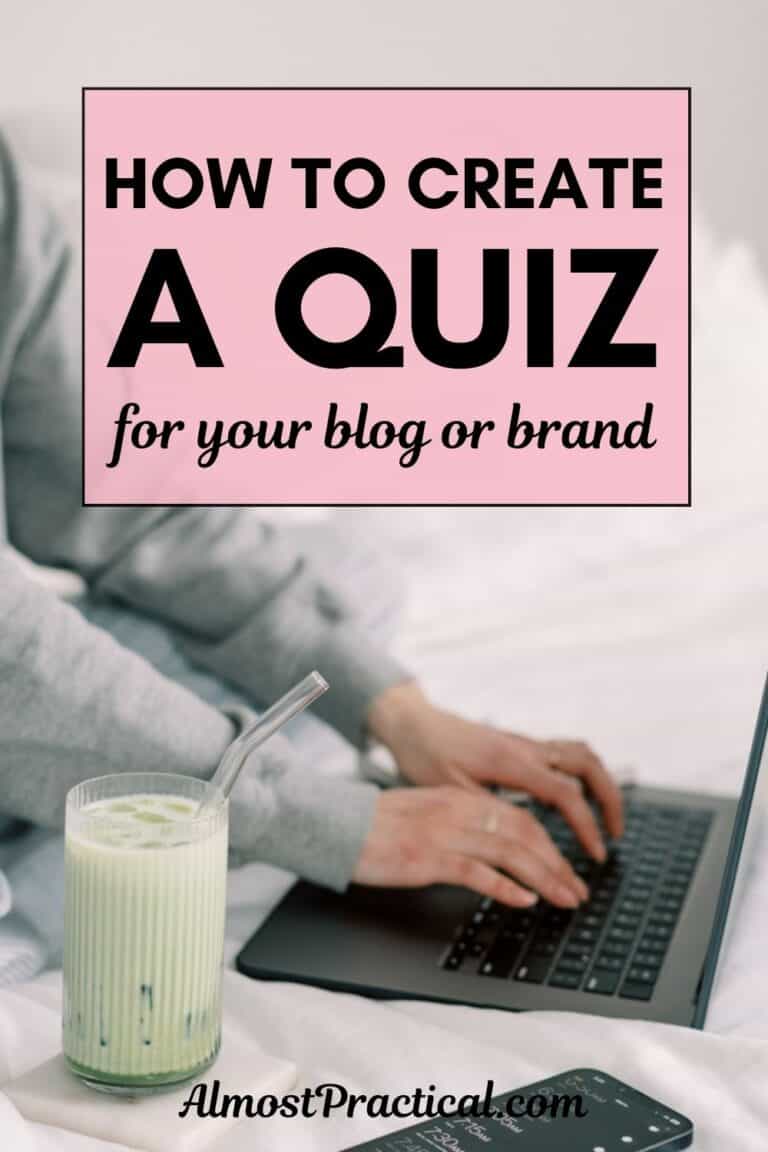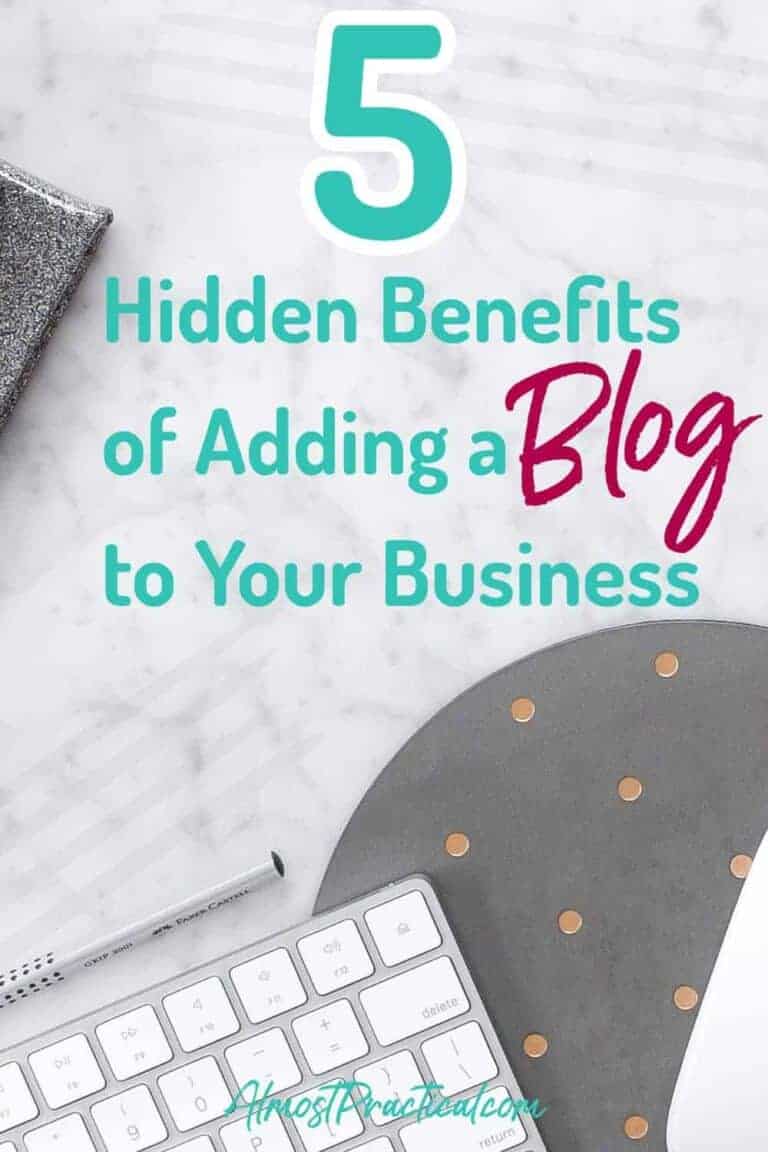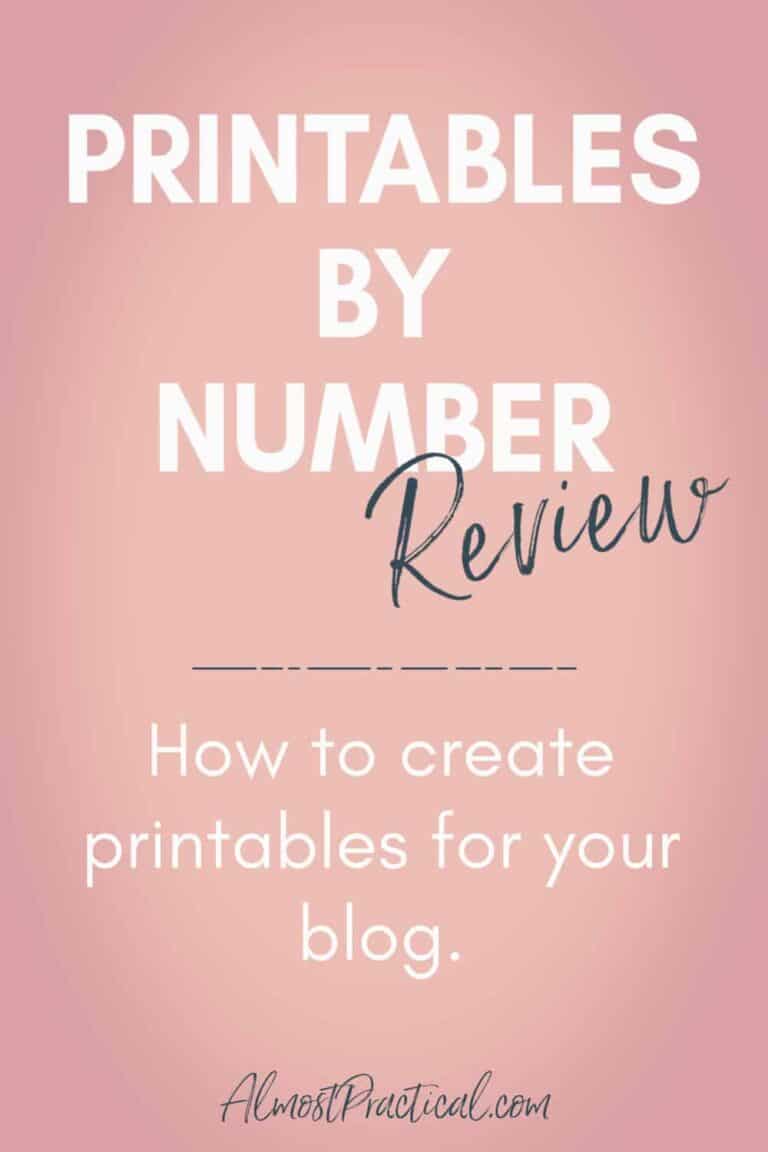What is Email Marketing? It’s Time For You To Start Winning at Email
This post may contain affiliate links which means I make a commission if you shop through my links.
Disclosure Policy
What is email marketing and how do you use it for your blog?
Email marketing is a very effective way for you to connect with your readers via their inbox.
Don’t worry if you don’t know much about it.
This simple guide goes beyond just the definition, and will explain everything in terms that are super easy to understand.
You will gain an understanding of
- why email marketing is effective
- how to build your email list
- how to get started with email marketing for free, and
- what your first emails should be about.

Email Marketing Basics
Let’s start with the basics.
Email marketing is not just about selling.
It’s about connecting with your audience.
Lots of new bloggers hear the word “marketing” and think – oh, that is not for me.
But it is.
Email marketing is about regular email communication to your email list.
Some of those emails may be informational and some may contain info about things you sell or affiliate products that you feel strongly about.
More Useful Blogging Tips
- It’s Never Too Late to Start A Blog – This Is How
- Blogging for Beginners FAQ’s
- 12 FREE Blogging Resources That You Can Download Right Now!
- 21+ Affiliate Programs You Can Join Right Now to Start Making Money
Email Marketing Advantages
As a new blogger, it is sometimes hard to fathom why you need to use email marketing.
Right now, you are working on creating content for your blog.
Sending out an email newsletter -yikes! – it just seems like way to much work.
But don’t ignore it.
Why Email Marketing is Effective
Email marketing is the best way for you to connect with your audience.
According to the Jeff Bullas blog:
People who buy products marketed through email, spend 138% more than people that do not receive email offers.
That is 138% – sheesh!
I know what you are thinking, right now: “Sounds great but – I’m not selling anything.”
Well, maybe not yet – but you will.
It might be your own product, it might be an affiliate product, or maybe you will use email to grow your audience by partnering with another blogger.
Whatever the case – your email fans will be at the center of it.
Resistance – I can feel it.
Recommended Blogging Resources
- The Genesis Framework and StudioPress Themes for WordPress
- Restored316 Designs – beautiful feminine WordPress themes
- PicMonkey Photo Editor – Take the FREE Trial
Check out all my favorite blogging tools here.
Why You are Holding Back on Email
Be honest – you probably think that email marketing is kind of sleazy.
I know I did.
But I learned that it doesn’t have to be.
If you know specifically WHO you are writing to, then your email becomes a source of useful information to your reader.
And a funny thing happens –
Your Readers Start to Trust You
When you show up in their email inbox every week, your readers start to build a relationship with you.
They look forward to the information that you have to offer, and they will buy products that you create or that you recommend.
I am sure you can think of at least one favorite blogger that you subscribe to. When their emails land in your inbox – you read every single one.
Your goal is to be THAT blogger to your own audience.
But remember,
With Trust Comes Great Responsibility
Your readers have given you their email address with the expectation that you will deliver content that they are interested in.
So, if you blog about fashion and you suddenly start sending email about baby toys – people may unsubscribe.
Likewise, if you start bombarding your readers with daily emails that contain a heavy sales pitch. Again, they might unsubscribe.
No one wants to feel like a commodity.
Be genuine in your communication and make life easier for them.
Unsubscribing Can be a Good Thing
You can’t please everybody.
You shouldn’t even try.
To keep your email mojo up and running – you must be true to yourself as well.
Maybe you blog about fashion for new moms. Then writing about toys makes sense.
The people that like fashion but don’t want to hear about baby toys might unsubscribe.
That is fine, because they weren’t your ideal reader anyway.
Do you see what I am saying?
This is How You Should Think About Email Marketing:
Your emails are an extension of your blog.
The people on your list are there because they want your information delivered to their inbox.
In fact, you are doing them a favor by letting them know about exciting new stuff in your field.
Don’t think of your list as bunch of people that you can market to.
Think of your list as a single person, a best friend, or a mentee, that really wants to hear about your latest posts, about deals, opportunities, and interesting people that can help them in their journey, and about products that you create.
They want this information delivered in a very personable way.
Now, all you have to do is give them what they want.
Easy, right?
How to Build Your Email List
In my opinion, the size of your email list is not as important as the quality of the people on it.
Not everyone will agree with that statement.
But, personally, it is hard for me to use email marketing because I always feel like I am “bothering” people.
The way I get over that is by offering an incentive for people to sign up to my email list.
And not just any incentive.
What You Should Offer People in Exchange for Their Email Address
To stir up interest in my list, I offer something that relates to what my emails are going to be about.
Here are two examples.
Right now I am offering my Ultimate List of Blogging Resources and I also offer a Website Color Cheat Sheet.
Both of these incentives are related to blogging.
My emails are mostly about tips, tools, and techniques for growing your blog – so the offers make sense.
If you have taken a look around my site, you will see that I also post recipes here.
Mostly I do this because I enjoy learning about food blogging and food photography. (If you are into food blogging – you should really check out the Food Blogger Pro course which is an amazing resource.)
But even though I post recipes, I don’t offer an email incentive that is cooking related (i.e. – Subscribe and get my top 3 smoothie recipes).
This is because my email marketing newsletters have nothing to do with cooking.
I might mention my latest recipe in an email but I don’t go much deeper than that.
So, the people that would have signed up to get my smoothie recipes would definitely be disappointed and unsubscribe from my “how to start” a blog emails.
I know I am getting ahead of myself here.
You want to know …
How Exactly Do People “Sign Up”?
As you visit websites across the internet, I am sure you have noticed that most websites have forms that you can fill out to subscribe to their list.
Do you know that…
There is a Hidden Purpose to the Sign Up Form
It’s called PERMISSION.
You see, there is actually a law called the CAN-SPAM act that governs all commercial email messages that are sent.
One way to stay in compliance with this law is to only send email marketing messages to people that specifically sign up to your list.
This means that you should NOT send email to people that simply:
- leave a comment on your blog post, or
- hand you their business card.
They specifically should fill out a form on your site or add their name and email to a paper list.
This form or list must make it clear that they are agreeing to receive email updates from you.
Where You Can Include a Sign Up Form On Your Website
Usually, there are several places on a site that make it easy for you to sign up:
- the top bar,
- a pop up form,
- in the sidebar,
- and sometimes a slide in, or
- a form in the footer.
How to Include a Sign Up Form On Your Own Website
The answer to this question is not quite so simple.
Use a Plugin
If you use self-hosted WordPress and the Genesis Framework – you can use the Genesis eNews Extended plugin to add opt-in forms to your site that integrate with most email service providers.
See What Options Your Email Service Provider Offers
Some email service providers like ConvertKit and Mailerlite (see my Mailerlite Review here) offer opt-in forms, pop ups, and landing pages as part of their service.
You can build these right on their site and copy and paste a snippet of code onto your site to get the box to appear.
Some email service providers also offer WordPress plugins to make it easier for you to integrate the forms.
If you don’t know what an email service provider is – keep reading – I cover that below.
Use a Third Party Service
Another option for creating opt-in forms to build your email list, is to use a third party service.
There are services that just do email opt-in forms. You can check these out:
- ThriveLeads
- MailMunch
- SumoMe
- HelloBar
Keep in mind – there are pros and cons.
Advantages of Using a Third Party Service
There are two main advantages to using a third party service to create your email marketing opt in forms.
- First, these services usually offer more options for customizing your forms.
- Second, they integrate with several different email service providers. So, if you start with ConvertKit for example and switch to Mailerlite, you just need to change the integration on the back end. You do not need to comb through your site and switch out every. single. form.
Disadvantages of Using a Third Party Service
I have heard that some opt-in services can slow your site down. Just something to keep an eye on.
Finally, you need to know this:
Why Use an Email Service Provider?
One of the biggest newbie mistakes that I see bloggers make is to use a personal email service to send out email for their blog.
In this case, personal email means a generic gmail or yahoo type service – even if you set it up specifically for your blog.
To keep your email marketing efforts compliant with the CAN-SPAM Act, you really must use an email service provider.
Related: What are email service providers – and why you need one.
Using an email service provider allows you to:
- create a double opt-in process when people sign up – which is a best practice
- give people an option to “unsubscribe” in every email that you send
- track the effectiveness of your email marketing through statistics like open rate and link activity
And now you know … the answer to that question:
What is Email Marketing? Well, It Goes Way Beyond Just a Definition
It is an integral part of building your blog and communicating with your readers.
A lot of my personal buying decisions are influenced by emails that I receive.
I’m sure yours are, too.
As a blogger you do need an email service provider to get started with email marketing.
And, unfortunately, most email services are not free.
However, I have a tip for you.
There are two email services that I know of, that are great options for beginning bloggers.
Companies That Offer Free Email Marketing
MailerLite
This is the service that I currently use – and I really like the features.
Click here to learn more about MailerLite.
MailerLite gives you unlimited emails to your first 1,000 subscribers.
Their service includes automations and customer support.
You may have heard about lists and tags in email marketing – well, MailerLite currently is list based but supposedly a tagging function is in the works.
MailChimp
MailChimp also offers a free level.
Click here to learn more about MailChimp.
The free accounts at MailChimp allow up to 2,000 subscribers and 12,000 emails.
Automations are now included in MailChimp free, but customer service is not.
Now that you know why you should be using email marketing for your blog –
What Are You Going to Write About?
In theory it all makes sense.
Yes. We should be sending out regular emails.
But in practice ….
When you are staring at that blank page with the blinking cursor, well – figuring our what to write about is kind of tough.
Despite everything I know, I still struggle with it.
So here are a few ways you can trick yourself to get those creative juices flowing.
The Sign Up Sequence
Typically, when someone signs up to get your free offer, they will get a short series of emails:
- Your email service provider will send out an email so they can confirm their subscription, under double opt-in.
- Once confirmed, your email service provider will automatically send out a second email with a link they click to download their freebie.
(Of course, you need to set these up initially, so that they go out automatically.)
But, then what?
Once they get the freebie, you don’t want to leave them hanging.
You should wait a day and then –
Send Out An Introductory Email
Let your audience get to know you by sending out an email with a few ground rules.
Tell them what they can expect in terms of the content and frequency of your emails.
You can even take it one step further.
Send Out Another Short Email Sequence
With this sequence you can do a few things:
- introduce yourself in a more personal way
- offer a little bonus (eBook, course, or printable) as a second gift for signing up
- send out a couple emails with some teaching or knowledge that you offer
How To Do This
In order to send out these little sequences automatically, you need to use an email service provider that offers automations.
Both MailerLite and MailChimp offer automations in their free level.
And ConvertKit is all about automations, too.
Basically, you write the emails before people sign up for your list – and then schedule them to be delivered over time based on when a person signs up.
So, if I sign up for your list today – I will get the first email in your sequence tomorrow and the next one in one week – for example.
But someone that signs up three days from now, will get the same first email the day after she signs up and the same second email a week after that.
This will help you keep writing because you don’t have to come up with original content constantly – but your readers will hear from you on a consistent basis.
Matt Molen’s Email on Autopilot Course takes you through the process of setting up an evergreen email sequence step by step.
But watch out how you handle this tricky situation:
Don’t Overload Your Readers With Email
The downside to automations is that they ARE evergreen and don’t reflect current promotions or events.
So, while you are automatically sending out an introductory sequence – you may also be sending your weekly newsletter or another sequence about a promotion.
Typically, the way I handle this situation is by scheduling automations to go out on a certain day of the week, and then sending out current info on a different day of the week.
This way, nobody gets two emails from me on the same day – unless I specifically want them to.
As with anything ..
The More You Write, The Easier It Is
Email marketing is a great way to connect with your audience.
It is effective because you build trust through email.
To get readers to sign up, you need to produce great content consistently and offer a little sign up bonus to sweeten the deal.
You can get started with email marketing for free with services like Mailerlite.
Just be yourself in your communication and set up a few automations to get the ball rolling.
What Are Your Biggest Email Marketing Obstacles?
Tell us in the comments below.








Hey Neena,
What a coincidence — you wrote a Fantastic post for beginners on email marketing and I wrote up something for folks who already do email marketing.
No, you don’t have feel like you are bothering your subscribers as long as you don’t over sell anything and that you don’t email almost every other day.
We’ll never know the right frequency that fits your business goals and still provide value to your subscribers unless you test things out.
Building a list has to be a priority for every blogger, that’s for sure. Although emails seems to have competition from Facebook messenger now (we can never be sure), my vote still goes out for email since “you” own your subscribers and you get complete control over your email marketing strategy.
It does take a while to build an email list with engaged and active subscribers — and yes, we should unsubscribe people (or allow them to do it themselves).
Fantastic post, Neena.
Ash